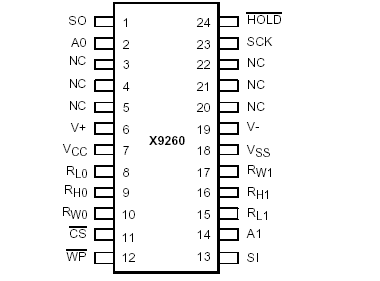X9260: Features: • DualTwo Separate Potentiometers• 256 resistor taps/pot0.4% resolution• SPI Serial Interface for write, read, and transfer operations of the potentiometer• Wiper R...
floor Price/Ceiling Price
- Part Number:
- X9260
- Supply Ability:
- 5000
Price Break
- Qty
- 1~5000
- Unit Price
- Negotiable
- Processing time
- 15 Days
SeekIC Buyer Protection PLUS - newly updated for 2013!
- Escrow Protection.
- Guaranteed refunds.
- Secure payments.
- Learn more >>
Month Sales
268 Transactions
Payment Methods
All payment methods are secure and covered by SeekIC Buyer Protection PLUS.

 X9260 Data Sheet
X9260 Data Sheet







